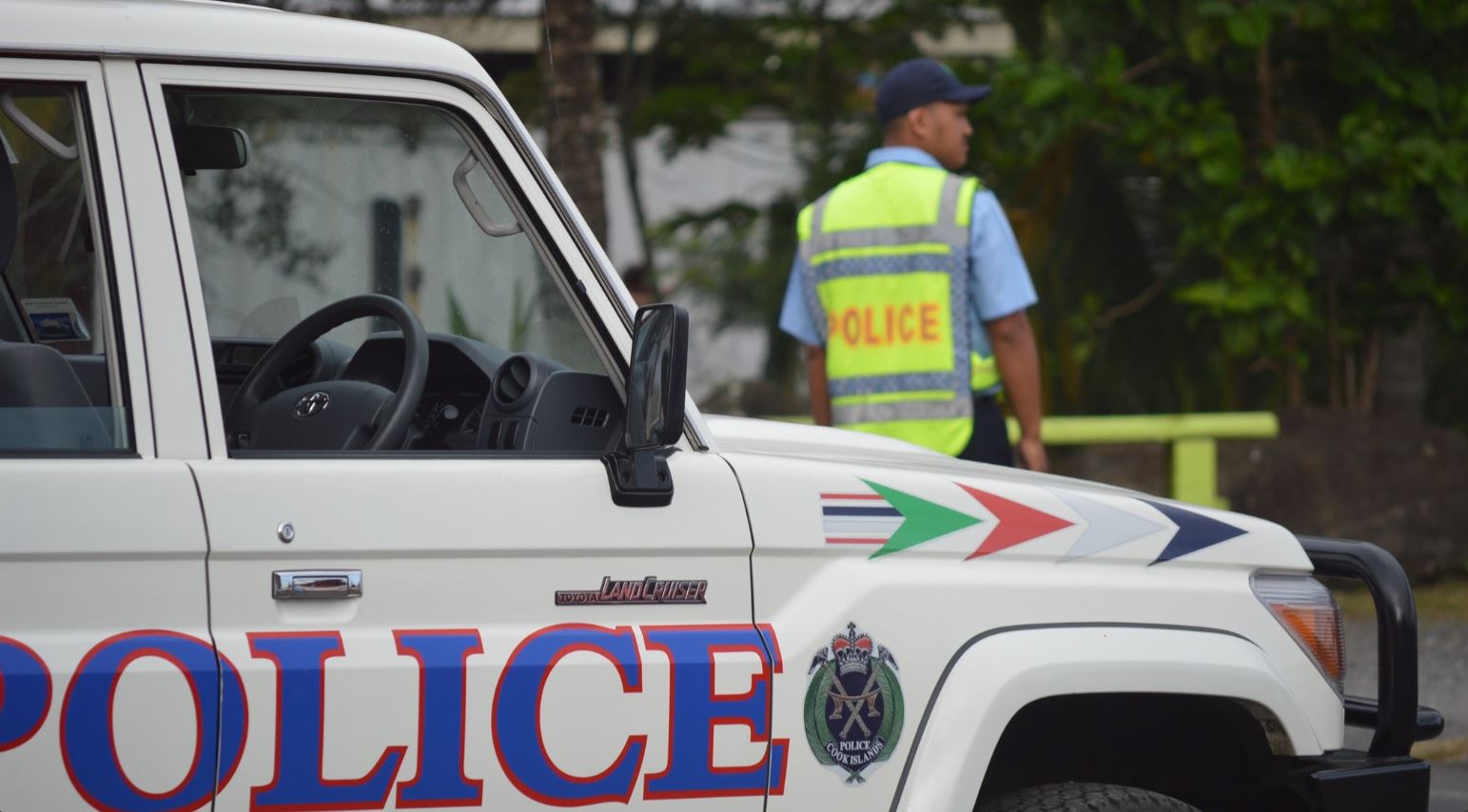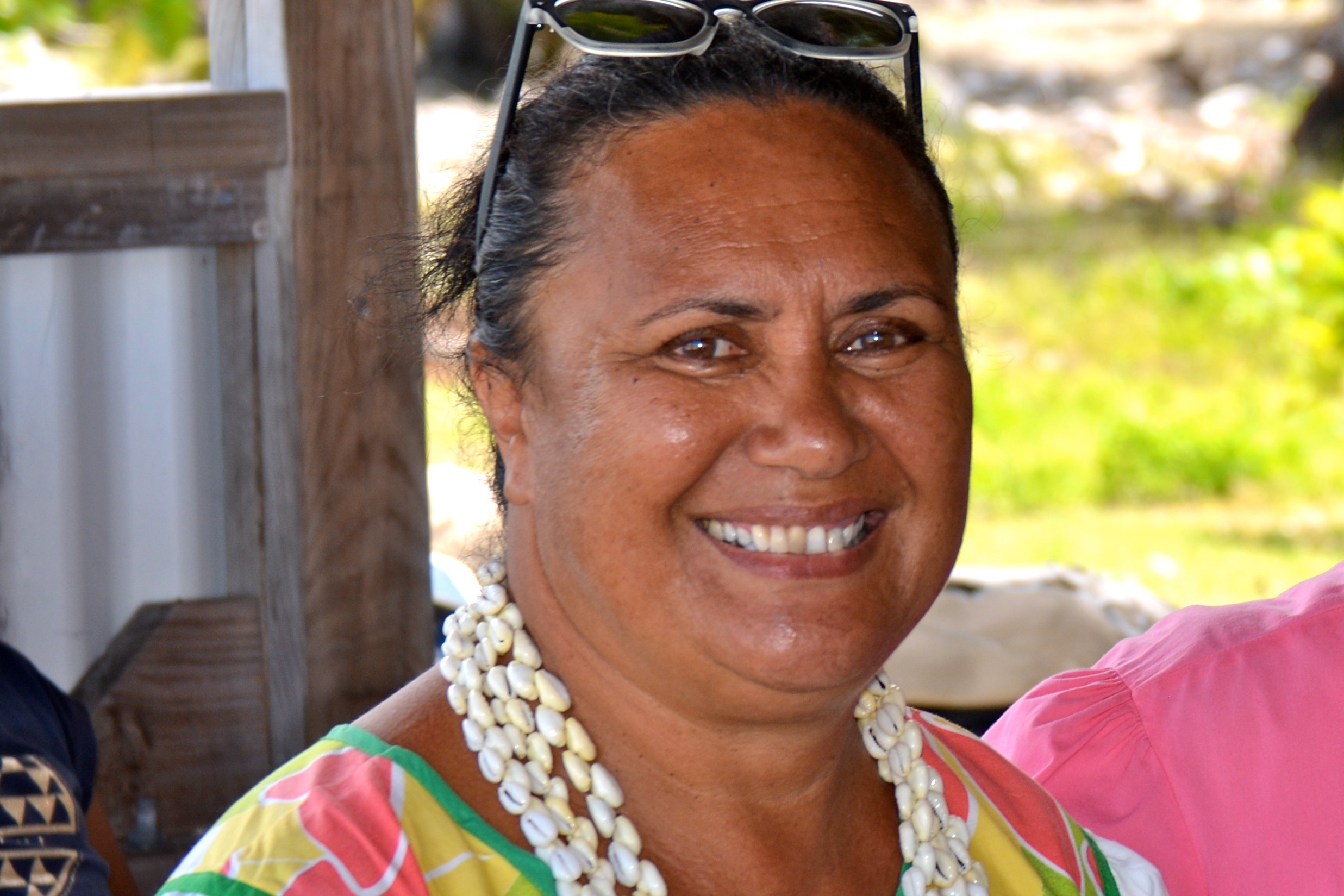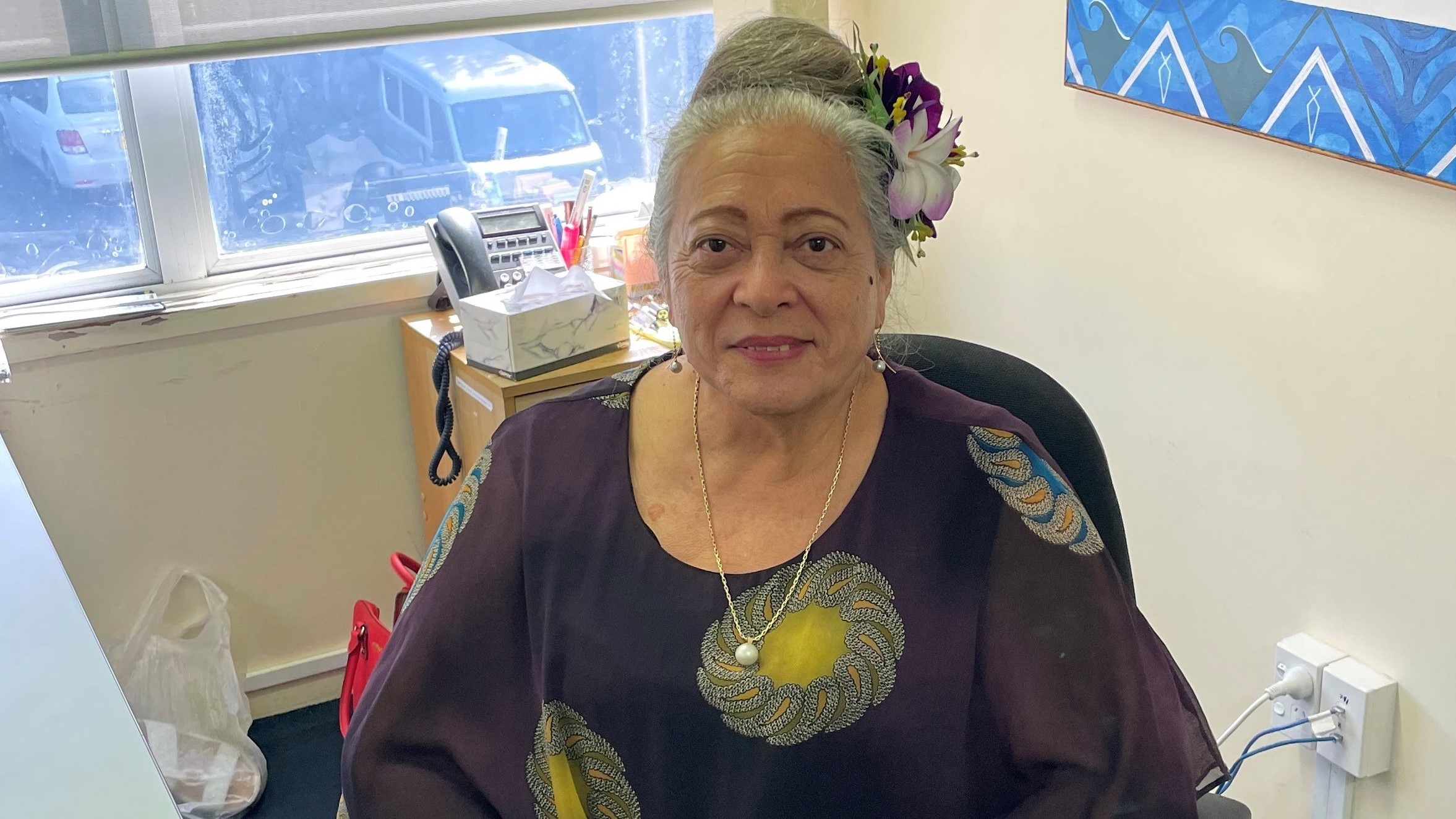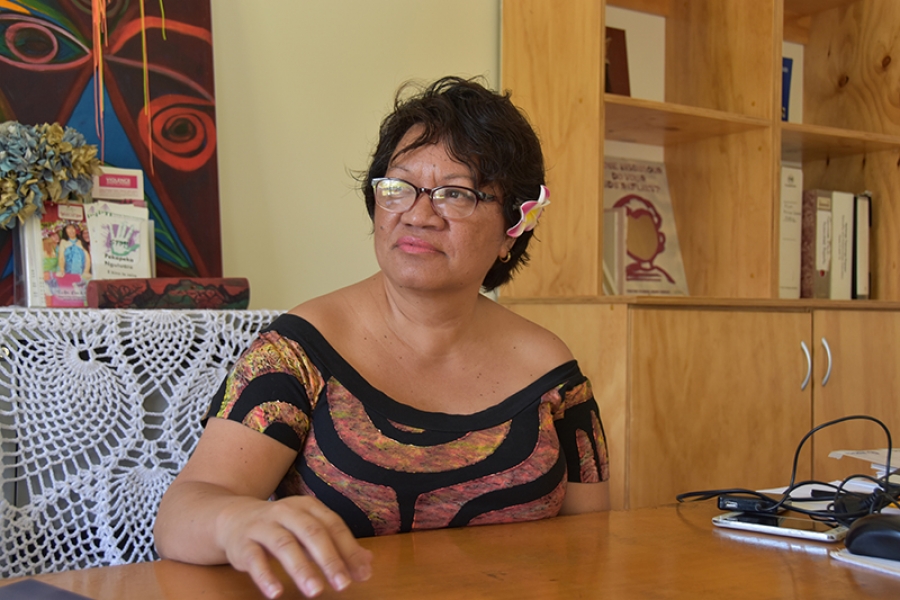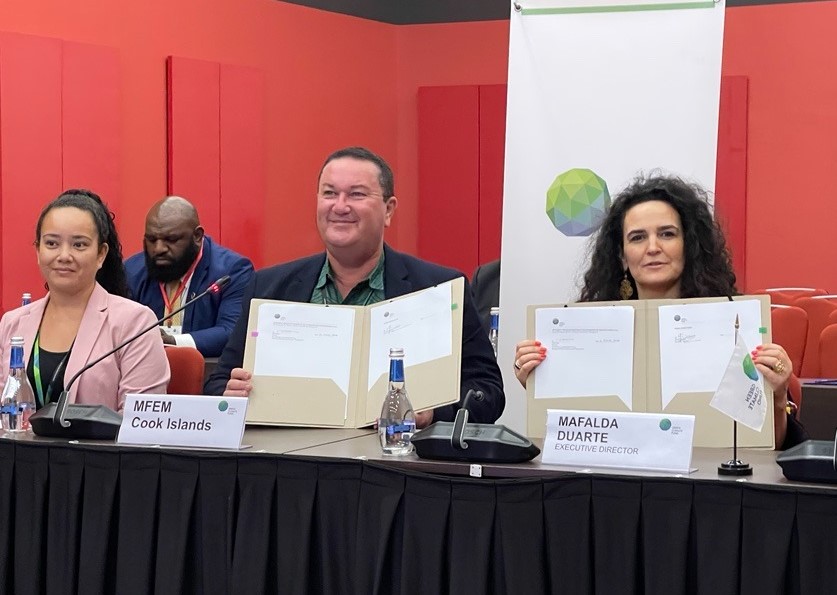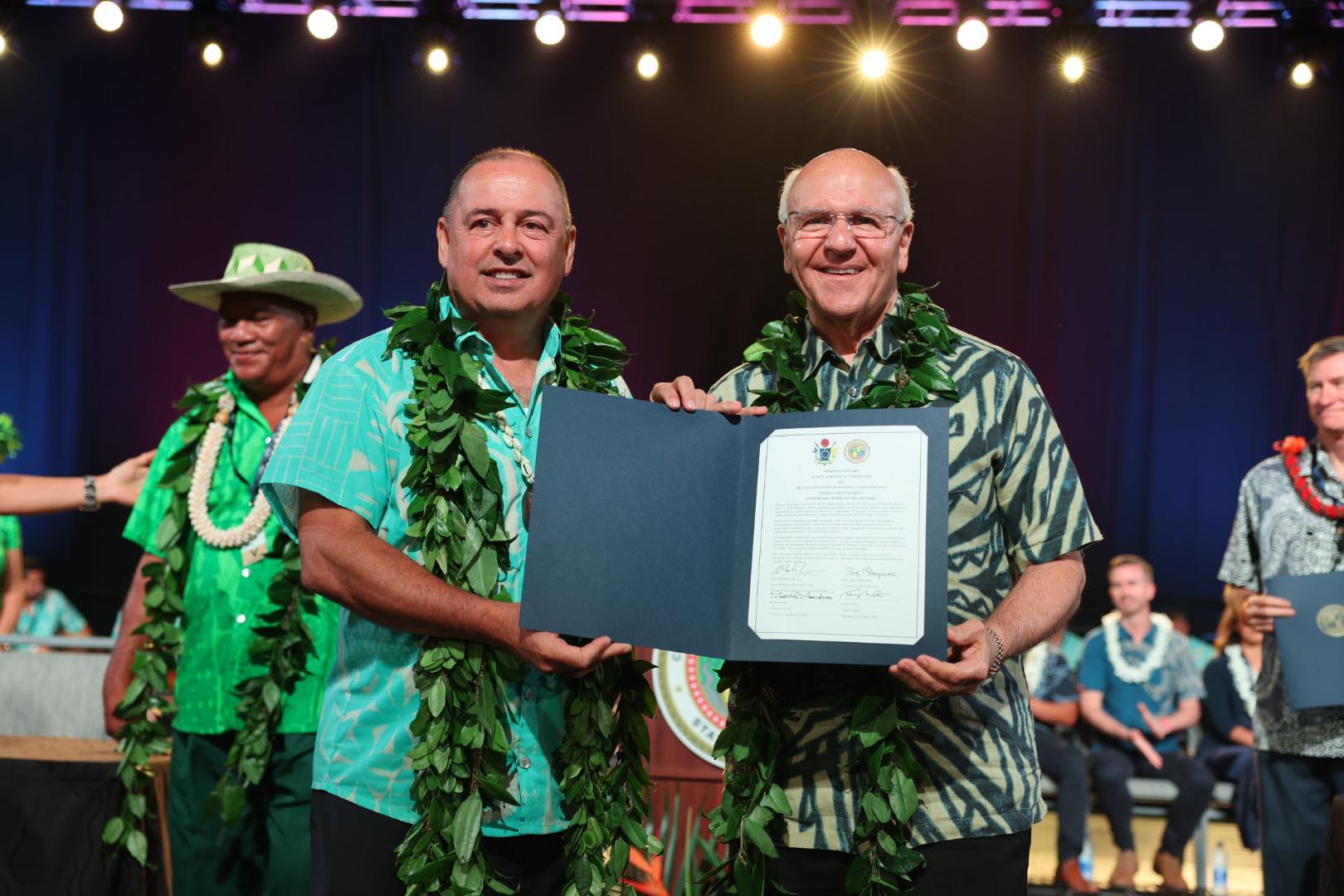Te Ipukarea Society: Community efforts to remove rats
Saturday 6 May 2023 | Written by Te Ipukarea Society | Published in Environment, National

Memory Moetaua and Joeryrll taking part in the bait consumption study carried out last year on Palmerston. TIS/23050552
Polynesian rats were introduced to the Cook Islands via early Vaka voyages. With time other species typically more dominant and destructive such as the ship rat and Norwegian rat were introduced via trading vessels arriving from far and wide.
The arrival of these invasive species has since led to the near extinction of the endemic Kakerori, Rarotongan Flycatcher. They have also impacted food security, with local farmers now having to try and keep the rats away from their crops.
Rat control programmes consisting of annual baiting regimes in the Takitumu Conservation Area have successfully managed rat population numbers to where Kakerori numbers have increased significantly. But for other islands that are so isolated, including Suwarrow and Palmerston, rats have taken a toll on the islands’ ecosystem resilience and Palmerston community’s food security.
Palmerston is to be the first populated island within the Cook Islands and possibly South Pacific to undergo a rat eradication project. Palmerston which has a fluctuating population of around 40 has no airstrip but is visited by cargo boats and cruise ships, arriving beyond Palmerston’s surrounding coral reef. Smaller boats are then used to ferry cargo and people to shore.
Palmerston’s isolation and location makes it a hot spot for nesting seabird and turtle populations, which has helped select the atoll as an ideal site to undergo a rat eradication project. Palmerston has around 11 motu. Two of these have been confirmed to hold rat populations. The ship rat, likely to have arrived in the 20th century via copra trading vessels, is an aggressive species known to harm local biodiversity. The Palmerston community has also identified rats as ruining their crops, stealing food from their kitchen as well as eating holes in their clothes.
The eradication of rats from Palmerston’s Home Islet and Cooks Islet is to commence in July this year through the collaborative efforts of the New Zealand Department of Conservation, Palmerston Island Administration, Cook Islands National Environment Service, Ministry of Agriculture and Te Ipukarea Society.
In the lead up to the rat eradication team arriving, the Palmerston community has been busy preparing their island for the eradication, requiring full community effort. Extensive community consultations have been carried out to decide on how to properly manage animals such as pigs and chickens. Pig pens act as an alternative food source for rats, a food source that needs to be removed to ensure all rats consume the poison bait to be used during the eradication. Chickens are known to be able to eat bait pellets, reducing the amount available to kill the rats. Management solutions for the chickens have included the culling of all chickens. The pigs include discussions around being all culled or moved to another rat free islets. Pigs and chickens will be replaced after the eradication is completed.
During the eradication process households will need to contain all waste produced in sealed bins to further limit alternative food sources for rats. All organic waste produced will be disposed of at sea with the remainder household waste collected and burned at a central rubbish hole.
The eradication of rats from Palmerston is a project that requires committed community buy in as there is substantial effort needed prior to the eradication and during. All the preparation work and community actions to be carried out during the eradication is to ensure that each rat present has access to one bait. The 38-day rat eradication project is to commence in mid-July this year. Strict biosecurity rules will be put in place and the community will have to be very vigilant to ensure the rats can never return to Palmerston.



















